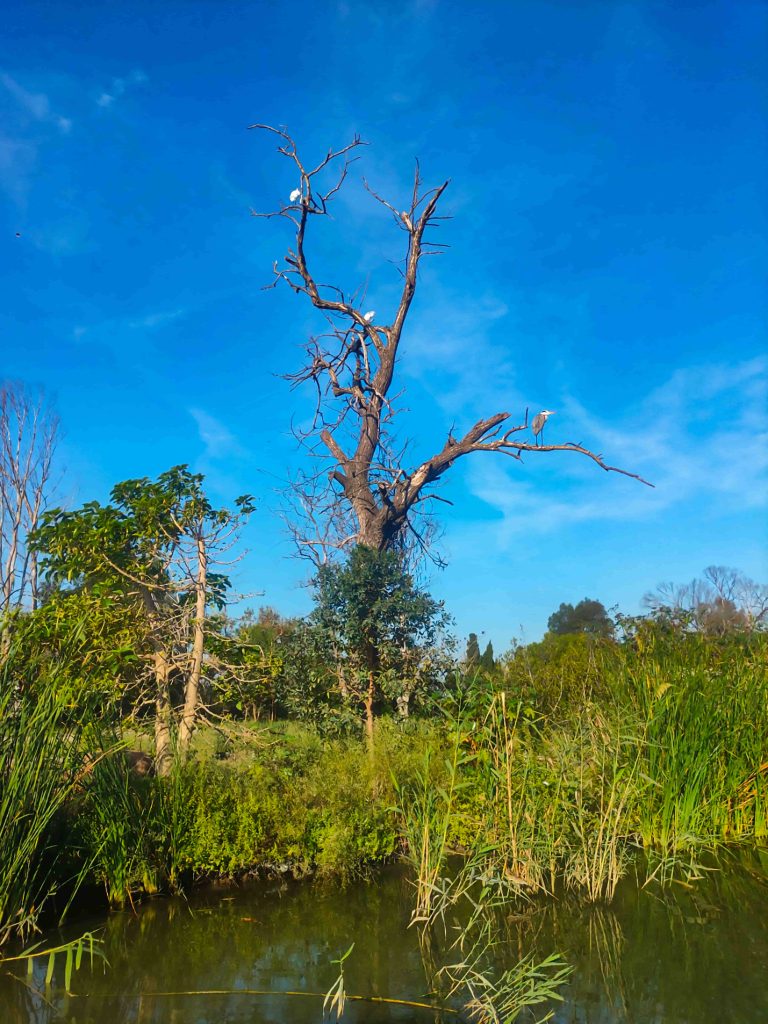The Natural Park
The Albufera Natural Park in Valencia is an essential destination for nature lovers located 10 km from the city of Valencia. With an area of more than 21,000 hectares, it is one of the areas of greatest ecological value in the peninsula and recognized for its beauty and rich biodiversity.
3 large ecosystems
The first is the Albufera lagoon, which is named after the natural park and it is the core of this natural environment.
With its almost 3000 hectares, it is the largest freshwater lagoon in Spain, however, its average depth is 1.2 meters. This lagoon embraces a great diversity of waterfowl species and it is considered an important conservation area, with great beauty, calm and clear waters reflecting the sky and the surrounding vegetation.
Surrounding the lake we can find the second ecosystem, formed by the marsh and its rice fields. This ecosystem is the biggest in the natural park with 16000 hectares.
Rice paddies are an essential part of the landscape of La Albufera and play an important role in the conservation of this ecosystem. Rice cultivation in this area dates back centuries and has become a traditional activity that is part of the culture and history of the region.
The third major ecosystem, which separates the lake from the sea, is “La Devesa”, one of the most valuable coastal forests in the Mediterranean. This 2000-hectare coastal strip, 35 kilometres long and one kilometre wide, is a protected natural area located south of the city of Valencia. The fauna that inhabits this forest is very diverse and adapted to the ecosystem.
Today, the lake is connected to the sea by three drainage channels These canals, called “golas”, regulate the water level of the lake with their floodgates that, when closed, allow the flooding of the rice fields, thanks to the contributions of water from the rivers “Júcar”, to a greater degree, and “Turia”. The direction of flow of the water is always from the lake to the sea. This is due to the need for water not to be salinized given that rice cultivation requires fresh water.

Formation of the Natural Park
Approximately a million years ago in Valencia there was a huge marine gulf (it stretched from the current capital to Cullera village: about 35 km), which over time became a portion of water separated from the Mediterranean by a coastal strip (“LA DEVESA”) in the form of a sand dam in which Mediterranean scrub vegetation later grew. This small sea or “Albuhaira”, as the Arabs called it. It has always been rich in resources from which a large number of living beings have survived, among which we also find humans. This interaction between man and the park led to the development of rice fields or marshes, which are now also part of the “albuferenc” ecosystem, the main reason for the transformation of the waters, which were originally salty, into the freshwater lagoon we know today.
Interesting facts
Date of declaration of Natural Park: 8 July 1986
Extension of Natural Park: 21,120 ha.
Extension of Lake Albufera: 2837 h
Average depth: 1.2 m
RAMSAR Conference wetlands of international importance: 8 May 1990.
Declared a special protection area (SPA): 8 June 1994

